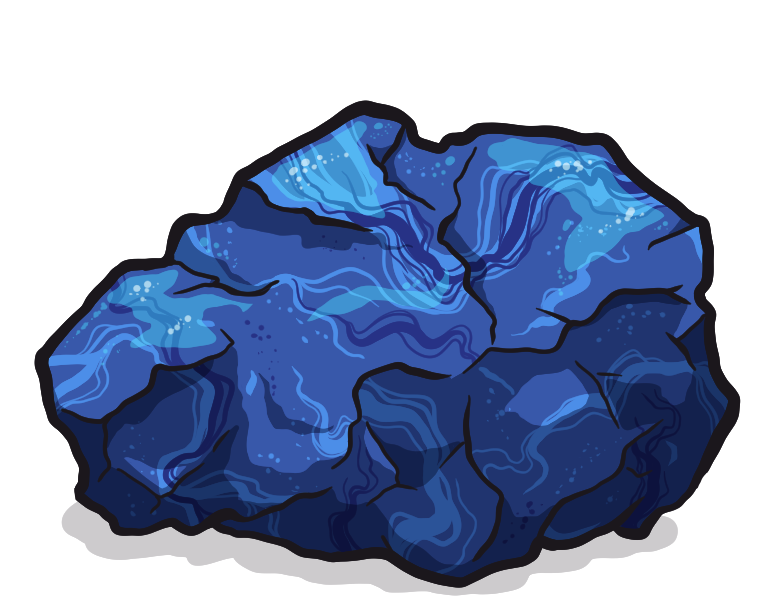Kaalite (kah-LITE)
The Luminous element that makes islands float.
Kaalite is a Luminous element, and reacts to Aura instead of thermal energy. It binds most frequently to common minerals and is responsible for all varieties of Floatstone that allow floating islands to exist.
Properties
Physical & Chemical Properties
As a Luminous element, kaalite absorbs traces of thermal energy but does not change state from it. It changes states with differing amounts of Celestial Aura instead.
It takes the most Aura out of all the luminous elements to change state. Liquid kaalite exists in nature only at the center of monoliths, towering formations of completely pure kaalite and iakine. Gaseous kaalite is theorized to exist on the moons and suns.
Hot and Cold
While there is only one name for kaalite, there are actually two forms of it: kaalite that reacts to lunar Aura and kaalite that reacts to solar Aura. Solar kaalite has its energy drained when in contact with lunar Aura, thanks to the law of Celestial Negation. The effect is reversed for lunar kaalite.
Compounds
Floatstones are compounds of kaalite and other non-Luminous elements. Kaalite essentially turns non-Luminous materials into Luminous materials when it mixes into them.
When enough kaalite binds with purer forms of earth metals, it creates Luminous metals. Luminous silver, gold, iron, and copper are rare and valuable.
Thermal Resistant Properties
Since kaalite resists the transfer of thermal energy so strongly, compounds that contain kaalite have higher melting points and lower freezing points than their non-Luminous counterparts. The more kaalite in the material, the more thermal resistant it becomes. This is part of what makes Luminous metals so valuable, as it makes them more durable for use in machinery.
Geology & Geography
Kaalite is found in concentrated quantities on floating islands. Its presence is what allows the islands to float.
It and its compounds are found in varying amounts all over the planet in nearly all types of soil and rock. Like other minerals, it can usually only be found in trace amounts in any given section of soil. Certain areas have higher concentrations of kaalite than others. Rarely, there is enough kaalite in the soil for it to glow noticably. The Field of Fallen Stars gains its name from this beautiful and rare phenomena.
Kaalite can be extracted from rock and soil using Glow magnets. It takes a long time to extract enough to be useful, and it takes more Aura than one person can safely produce to melt it down into a bigger piece, so it is rarely worth the effort. However, recent innovations in Auratech might allow the artificial creation of Luminous metals by inserting extracted kaalite into existing metals. It would result in metals with perfect 50/50 or 40/60 ratios of kaalite to metal, making them the most thermal resistant and Aura reactive as possible without losing their regular properties.
History & Usage
History
Kaalite does not have a clear "discovery" date, because it has always existed everywhere, and it is not hidden. Floating islands are scattered across the skies all across the planet. Patches of floating soil or solitary floating boulders aren't uncommon either. Kaalite was the first form of Luminous element that sapient life was aware of, and for a long time it was assumed to be the only form of Luminous element. Edylium was originally assumed to be a different, organic form of Kaalite, until it was realized to be a different element entirely, and Iakine wasn't discovered until much later when the internal composition of monoliths began to be examined.

Related Elements
EdyliumIakine
Floatstone
Rock that contains large amounts of kaalite, allowing it to float


Comments